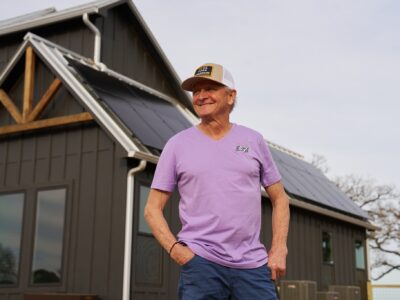Homeowners who want to cut their utility bills and reduce their carbon dioxide (CO2) emissions can do both through one simple move: installing heat pumps. According to a 2021 study from Environmental Research, about one-third of U.S. houses would “benefit economically from installing a heat pump,” while 70% could reduce their CO2 emissions by doing so.
To help expand the use of heat pumps in the United States, the current administration and a bipartisan coalition of 25 state governors have joined forces in a commitment to install a total of 20 million pumps by the end of the decade.
The coalition, formally known as the U.S. Climate Alliance, joined White House officials in September to announce the initiative, The Hill reported. The announcement was made at a Climate Week event in New York.
Photo Courtesy U.S. Climate Alliance
Installing 20 million heat pumps would more than quadruple the number currently in operation in the U.S., which officials estimate is 4.7 million.
The commitment is part of a broader effort to achieve net-zero emissions by 2050, with different states adopting different strategies to get there. For example, Pennsylvania and seven other states aim to develop a “clean heat” standard for heaters, according to a report from the Associated Press (AP).
Heat pumps are efficient because they can warm and cool buildings without requiring much electricity. They could also play a significant role in battling climate change by replacing oil and gas furnaces that emit carbon into the air, the AP noted.
Research has found that buildings contribute more than 30% of the world’s greenhouse gas emissions. Lowering the carbon footprint of buildings could go a long way toward reducing carbon everywhere.
As The Hill noted, the announcement came days after a coalition of congressional members asked the current administration to “take speedier action on a rebate program for energy-efficient home heating technology, including heat pumps.” They warned that eligible homeowners could miss out on the rebates without such actions.
Maine Gov. Janet Mills, co-chairwoman of the Alliance, has been particularly aggressive in accelerating the heat pump transition.
“When I took office in 2019, I set a goal of installing 100,000 heat pumps in Maine by 2025,” Mills said in a statement. “After reaching that goal two years ahead of schedule, we are now on our way to achieving our new target of 275,000 heat pump installations by the time I leave office in 2027.”
“Maine is meeting our climate action goals, and we’re proud to lead the way as part of the U.S. Climate Alliance to encourage other states to do the same,” she continued.
Photo Courtesy @USClimate
Since the Alliance’s origin, it has grown to include half the nation’s governors. Among other things, they have pledged to collectively reduce greenhouse gas (GHG) emissions by at least 26% to 28% below 2005 levels by 2025 and at least 50% to 52% below 2005 levels by 2030.
Another goal is collectively achieving overall net-zero GHG emissions “as soon as practicable, and no later than 2050.”
Photo Courtesy U.S. Climate Alliance
“Alliance states and territories are achieving lower levels of air pollution, delivering more energy savings to homes and businesses, preparing more effectively for climate impacts, generating more electricity from zero-carbon sources, and collectively employing over 40% more workers in the clean energy sector than the rest of the country,” the Alliance stated on its website.





